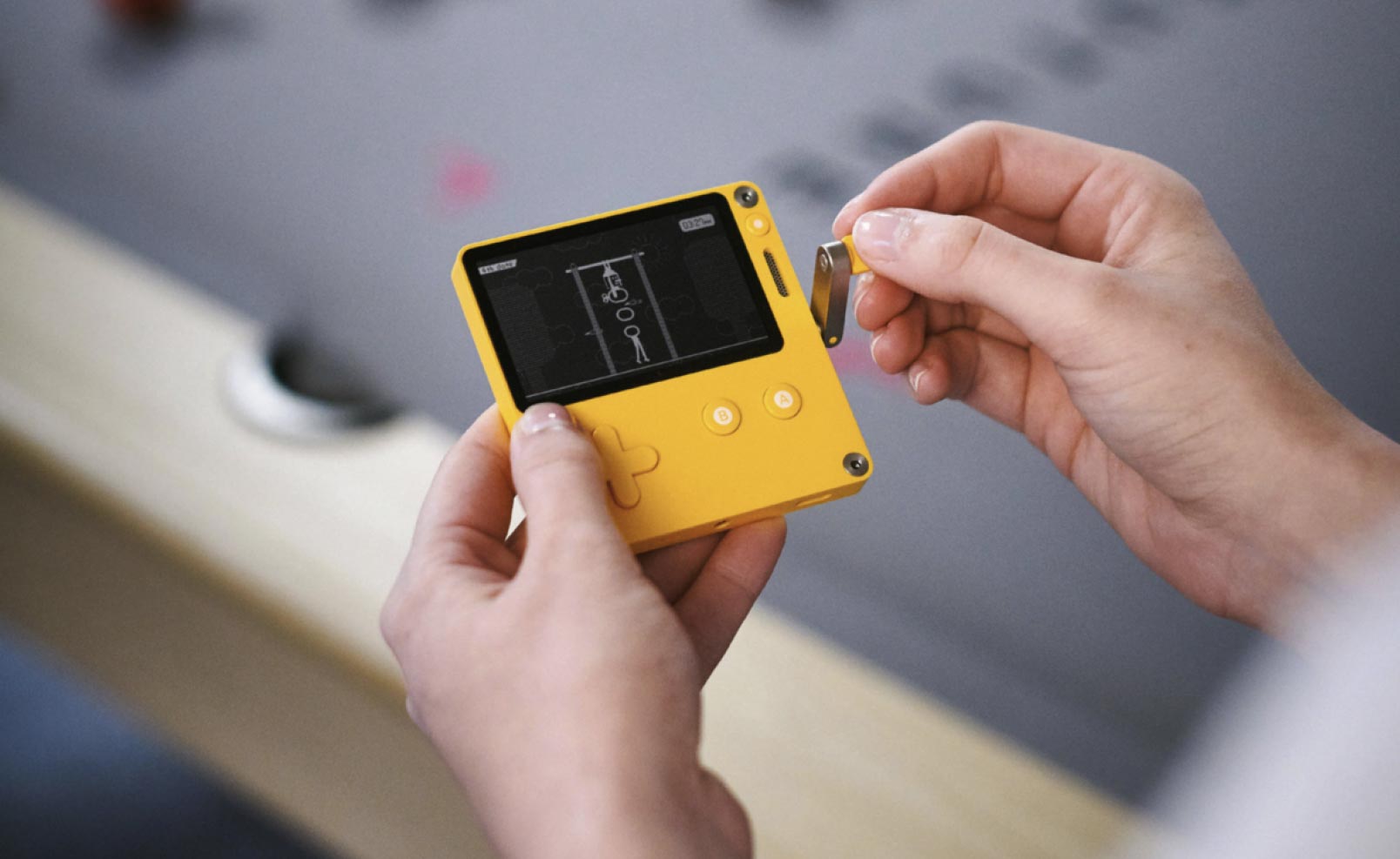We didn’t see it coming either. As Panic Inc. co-founder Cabel Sasser leads us through the streets of San Francisco, looking for a place to show us his top-secret project, we’re convinced we’re about to see a game. A quiet corner of a coffee shop is apparently not private enough, even though we’re sure we could hide a screen from view. Then again, Sasser’s not carrying a laptop – in fact, he doesn’t appear to be carrying anything at all.
Halfway up a nondescript stairwell, it turns out, is the ideal venue to unveil what Panic – maker of Mac and iOS software, publisher of Firewatch and the forthcoming Untitled Goose Game – has been working on for years. Sasser smiles, and reaches into his shirt pocket.
In a flash of sunshine yellow, out comes a tiny handheld console.

It’s Game Boy-like, a D-pad and two chunky buttons sitting below a screen. It’s perfectly square, however, and remarkably slim. In the hands, it’s pleasantly weighty. There’s a softness to the matte plastic shell, which we can comfortably grip while clacking the shiny buttons. It feels like it costs money. Little wonder: the industrial design, Sasser tells us, is the work of revered Swedish electronics manufacturer Teenage Engineering.
Were it simply what it first appears to be – a high-class retro homage to the Game & Watch – it would be surprising enough. This is a week during which we’ve just seen Google waltz into the game industry with a grand vision for a cloud-based future in which boxes are a thing of the past. Yet here is a man with a portable console of almost belligerent boxiness.
And the surprises keep coming. For all its retro trappings, this is a thoroughly modern bit of hardware. The 2.7-inch black-and-white screen has a resolution of 400 × 240 – around four times the pixels of the Game Boy’s screen. Much like the E-ink screen you’d find on a Kindle, it’s not backlit – the difference is that it’s tremendously reflective, the visuals wonderfully sharp and clear in the California sunshine. The in-built speaker looks minuscule, but is so powerful that we have to hurriedly hunt for the volume controls, lest any passers-by be alerted to the existence of this bizarre little gizmo.
Then there’s the contemporary modus operandi that gives the console its name. Every Monday, via Wi-Fi, owners receive a new game, the notification light on top of the case blinking to announce its arrival. Whenever you have five spare minutes, you’ll be able to reach into your own shirt pocket, and make time for your Playdate. And these games aren’t your basic Game & Watch fare. They’re specially crafted titles from such indie superstars as Bennett Foddy, Zach Gage and Katamari Damacy creator Keita Takahashi.
It’s the latter’s game that reveals the last surprise. We boot up Crankin’s Time Travel Adventure, but now none of the buttons seem to be working. And then we notice the strange metal rod on the right-hand side of the console. Cabel Sasser gives it a tug. From inside the shell, a diminutive crank pops out. We turn it, and our hero begins to move, in the way only a Keita Takahashi character can move – bouncily, ridiculously, with a lurid array of squeaky sound effects – and we start to laugh. And isn’t that quite the point? This little yellow curveball, for all its absurdity, is purpose-built for happiness. ►
Copyright © Future Publishing 2019